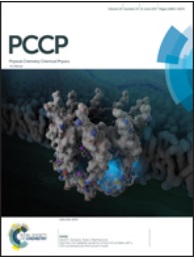The molecular dynamics of an ionic liquid (IL) composed of a 1-ethyl-3-methylimidazolium cation and a triflate (trifluoromethanesulfonate) anion, abbreviated as [Emim][TfO], were studied by NMR spectroscopy. By measuring the temperature-dependent high-field 1H and 19F spin-lattice relaxation (SLR) rates, the frequency-dependent 1H and 19F SLR dispersion curves using fast-field-cycling relaxometry, and the temperature-dependent 1H and 19F diffusion constants, and by utilizing the fact that the primary NMR-active nucleus on the Emim cation is 1H, whereas on the TfO anion it is 19F, the cationic and anionic dynamics were studied separately. A single theoretical relaxation model successfully reproduced all the experimental data of both types of resonant nuclei by fitting all the data simultaneously with the same set of fit parameters. Upon cooling, [Emim][TfO] exhibited a supercooled liquid phase between TSL = 256 K and the crystallization temperature TCr ≈ 227–222 K, as confirmed by differential scanning calorimetry (DSC) experiments. Theoretical analysis revealed that within the liquid and the supercooled liquid states of [Emim][TfO], the 1H and 19F relaxation rates are affected by both the rotational and translational diffusional processes with no discontinuous change at TSL. While the rotational diffusion is well described as an Arrhenius thermally activated process, the translational diffusion undergoes strong freezing dynamics that are well described by the Vogel–Fulcher model assuming a freezing temperature of T0 = 157 K. The existence of the supercooled liquid region in the [Emim][TfO] IL should be taken into account when using this IL for a specific application.

